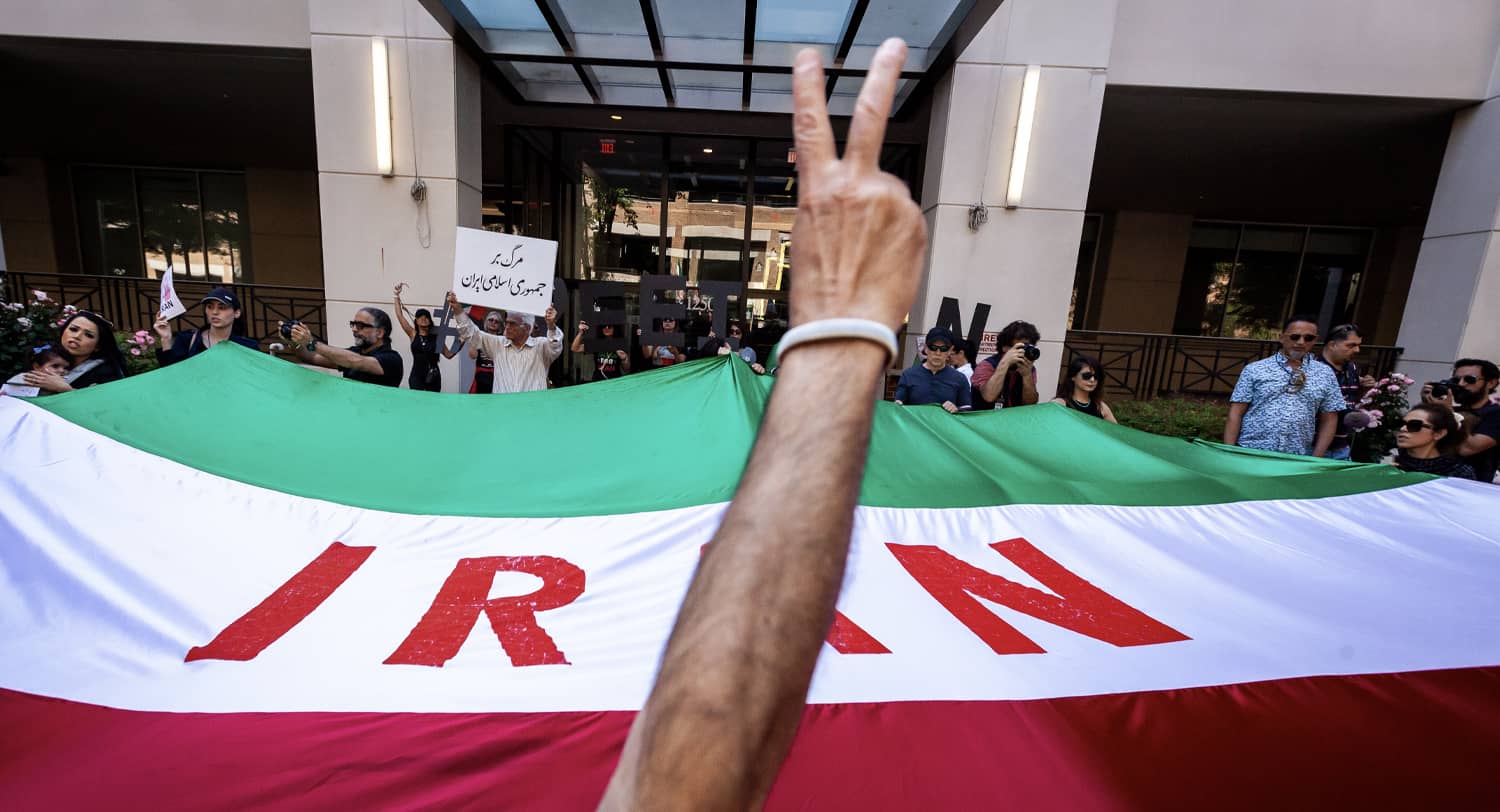In September 2022, Iranians from all walks of life took to the streets against the ruling clerical regime. The immediate cause was the brutal death of 22-year-old Mahsa Amini at the hands of regime security forces for the crime of improperly wearing her Islamic headscarf or hijab.
The grassroots protests quickly transformed into something else: a fundamental rejection of the Islamic Republic’s system of government. And as the protests continued into Spring 2023, hopes rose in the West that they might, at long last, coalesce into a real challenge to the country’s 44 years of clerical rule.
Today the promise of the “woman, life, freedom” movement has dissipated. The Iranian regime regained the upper hand sufficiently to relaunch a war on women. In recent months, Iranian authorities unveiled a new plan to ensure female dress complies with religious edicts. The country’s morality police now exhibit a stronger presence around Tehran’s central districts, full of police patrols, morality vans and police motorcycle patrols. Businesses found not to be enforcing the country’s mandate of compulsory hijab risk getting shut down, while individuals not in compliance receive warnings and could face legal action.
The oppressive status quo is unlikely to change. Although Iranian president Masoud Pezeshkian campaigned on a platform that included a relaxation of the country’s morality code, authorities tightened restrictions after his election in July 2024. They also launched a three phase scheme said to involve the training of some 1,500 “missionaries” to proselytize a “culture of chastity and hijab” in schools and education centers around the country. A particular focus of the new effort appears to be the country’s youth, a demographic which has proven itself particularly resistant to curbs on female dress.
Nevertheless, the “woman, life, freedom” protests marked a fundamental alienation of Iran’s population from its ruling regime. They also highlight a quickening in the pace of domestic unrest, instances of which have taken place with growing frequency since the late 1990s. As a result, Iran will face another cycle of anti-regime activity, and likely sooner rather than later. In turn, those future protests may succeed in catalyzing fundamental political change within the Islamic Republic.
Iran is on track to experience a significant transition in coming years owing to a confluence of socio-political factors.
One is demographic. During the 1980s and 1990s, Iran witnessed a “youth bulge” as a result of the high fertility rates that prevailed during the Pahlavi era. The impact of this demographic surge has proven lasting. As of 2010, over 60 percent of Iran’s population was estimated to be under 30 years old. Today, almost 40 percent 0f Iran’s roughly 86 million citizens are 24 years old or younger. A plurality of Iranians was either not alive or not old enough to be politically aware when the Islamic Revolution took place.
Iran’s younger generations lack any formative experience with the Islamic Revolution and its underlying tenets. They lack ideological bonds to the current regime in Tehran, such as those that prevail among Iran’s older generations. Consequently, this demographic cohort has emerged as a paramount source of anxiety for Iran’s ruling elite.
Another is declining religiosity. Religious identification is experiencing a precipitous decline within the country, exemplified by declining mosque attendance and a generalized turn away from religiosity on the part of ordinary Iranians. This secularization has further widened the gap between Iran’s theocratic leadership and a populace that now feels less and less bound by the ideological principles of the 1979 revolution. And as religiosity within the Islamic Republic has declined, so too has the political legitimacy of the country’s current regime.
This constitutes a significant shift. In 2009, when the “Green Movement” emerged as a reaction to Mahmoud Ahmadinejad’s controversial re-election to the Iranian presidency, the opposition’s aspirations still centered on reforming the Islamic Republic from within. Indeed, that movement’s figureheads, Mir-Hossein Mousavi and Mehdi Karroubi, were both establishment insiders who had previously held senior governmental positions. They advocated gradual, incremental changes. But societal attitudes have changed since then. Despite long-standing fractures along political, ideological, and cultural lines, a growing consensus among Iranian opposition forces is that the Iranian regime is irredeemably corrupt, ideologically bankrupt, and must be discarded.
Tehran’s ruling establishment is painfully aware of this tectonic attitudinal shift. In recent years, the regime has responded to domestic unrest with escalating repression and brutality in a heavy-handed campaign that included mass killings and the unprecedented severing of internet access nationwide. Iran’s leadership recognizes that it has irrevocably lost the “hearts and minds” of a vast swath of its citizenry. It employs any means necessary in order to cling to power.
To be sure, the Islamic Republic may still weather these shifts intact. However, it may not do so. The unraveling of the existing Iranian order would carry tremendous consequences for the Middle East and for American interests in the region.
Precisely what shape a future Iran might take is not clear. There is little consensus over the necessary prerequisites for a smooth transition to a more free and representative government in Tehran among Iran’s assorted opposition forces. In Washington, there is also a lack of clarity over how to align a future Iran with American strategic priorities.
A new US approach must begin with the deeply split Iranian opposition. Rather than the current piecemeal engagement with various groups and actors, each of which possesses its own agenda, the United States should articulate a clear, defined set of principles it believes are integral to the formation of any future Iranian government. These should include:
Preserving national integrity, and supporting opposition elements firmly committed to maintaining Iran’s territorial cohesion. A fractured Iran poses significant security risks, particularly given the advanced state of the country’s nuclear program.
Strengthening civil society by prioritizing opposition groups that advocate for robust civil society and meaningful engagement across Iran’s political spectrum. Such a focus is necessary to counter the Islamic Republic’s long legacy of repression and its systematic undermining of pre-Islamic culture.
Emphasizing secular governance and promoting legislative frameworks that allow for the broadest possible expression of faith. Such an approach would acknowledge the growing distance from religion exhibited by the Iranian population in recent years.
Monitoring nuclear development, since a will to nuclear power will likely persist in a post-theocratic Iran. Opposition forces must commit to pursuing any development in this arena through a transparent, verifiable process that is both internationally monitored and regulated.
Prioritizing pluralism, and focusing on religious tolerance, gender equality, and social inclusiveness – rather than insisting on Western-style democracy as the only acceptable outcome of a post-theocratic transition.
Stressing accountability and rehabilitation, and encouraging opposition plans that balance holding regime officials accountable with reintegrating key segments of the current power structure into the country’s future political order.
In order for the US to proactively shape the contours of the debate within the Iranian opposition it needs to lay out what sort of government it wants in Tehran, and its expectations of the actors that will play a part in bringing about this change. And, given the growing indicators that the Islamic Republic is approaching a fundamental political and social transition, the sooner Washington does so, the better.
This article is drawn from Ilan Berman’s new report, Navigating the Iranian Opposition, which is available on the AFPC website (www.afpc.org).



